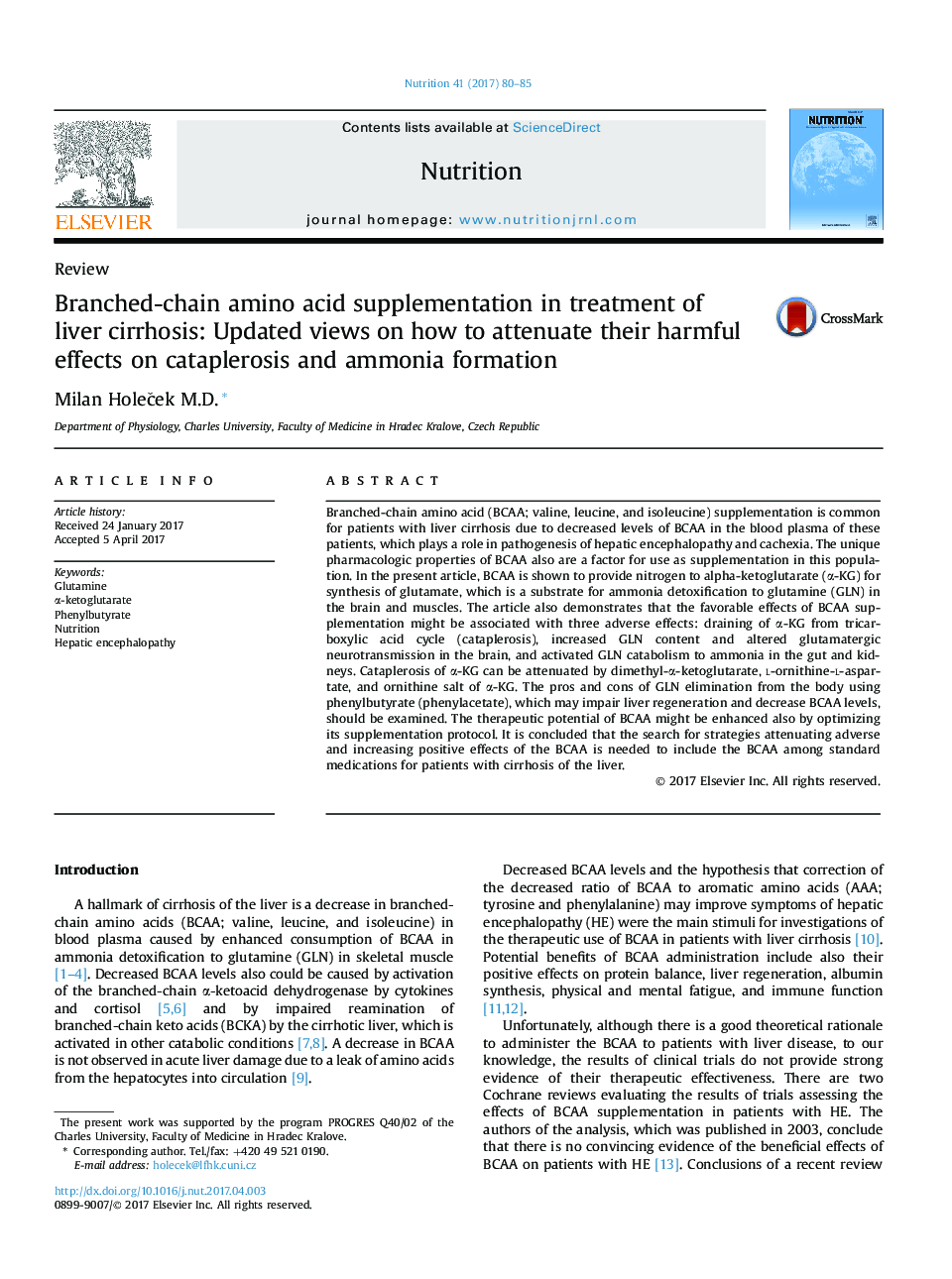| Article ID | Journal | Published Year | Pages | File Type |
|---|---|---|---|---|
| 5656831 | Nutrition | 2017 | 6 Pages |
Abstract
Branched-chain amino acid (BCAA; valine, leucine, and isoleucine) supplementation is common for patients with liver cirrhosis due to decreased levels of BCAA in the blood plasma of these patients, which plays a role in pathogenesis of hepatic encephalopathy and cachexia. The unique pharmacologic properties of BCAA also are a factor for use as supplementation in this population. In the present article, BCAA is shown to provide nitrogen to alpha-ketoglutarate (α-KG) for synthesis of glutamate, which is a substrate for ammonia detoxification to glutamine (GLN) in the brain and muscles. The article also demonstrates that the favorable effects of BCAA supplementation might be associated with three adverse effects: draining of α-KG from tricarboxylic acid cycle (cataplerosis), increased GLN content and altered glutamatergic neurotransmission in the brain, and activated GLN catabolism to ammonia in the gut and kidneys. Cataplerosis of α-KG can be attenuated by dimethyl-α-ketoglutarate, l-ornithine-l-aspartate, and ornithine salt of α-KG. The pros and cons of GLN elimination from the body using phenylbutyrate (phenylacetate), which may impair liver regeneration and decrease BCAA levels, should be examined. The therapeutic potential of BCAA might be enhanced also by optimizing its supplementation protocol. It is concluded that the search for strategies attenuating adverse and increasing positive effects of the BCAA is needed to include the BCAA among standard medications for patients with cirrhosis of the liver.
Related Topics
Health Sciences
Medicine and Dentistry
Endocrinology, Diabetes and Metabolism
Authors
Milan M.D.,
